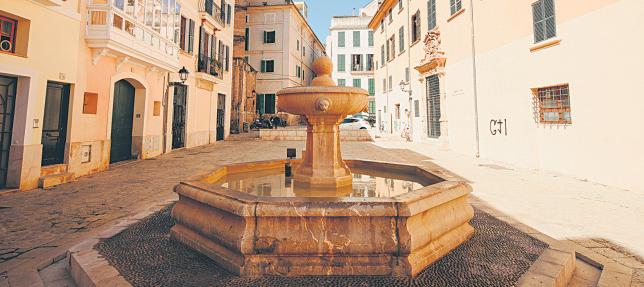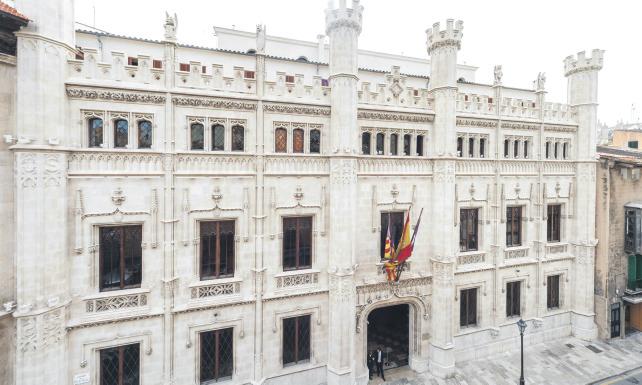
2 minute read
Palma’s history
THE city of Palma is the result of centuries of history marked by the different cultures that inhabited the city.
One of them, which had an important political and economic weight on the island, was precisely the Jewish community.
During the Muslim domination, Palma’s Jewish quarter, known as ‘Call Maior’, was a kind of city in its own right; it was also walled and had its own entrances.
Unfortunately, there is not much left of this Jewish quarter, which was destroyed and burned to the ground.
However, the history is still there, you just have to look for it.
The Carrer Sol was considered the main entrance to Palma’s Jewish site. At the top of the street, on the ground, you can see a plaque commemorating the old entrance to Call Maior.
€
1.2m project
MANACOR Council has approved a record investment of €1.2 million to improve Cales de Mallorca urbanisation. It is part of a wider scheme to spend €7.2 million on various projects throughout the area. The cash injection will be used to revamp several streets, parking areas, pavements and street lighting.
The street leading up to this entrance is actually called Carrer del Call.
One of the main stops on the route is the Iglesia de Montesion (Mount Zion) church.
The interesting Centre Maimo ben Faraig is a great place to learn about Palma’s medieval Jewish history from the 14th century.
At the Museum of Mallorca, you can also see some archaeological remnants from the Jewish era.
The Museum of Mallorca can be found at Carrer de la Portella, 5, 07001 Palma, Illes Balears. For more information call: (+34) 971 597 995.
These include Calles Cabrera and Dragonera that are currently in very bad condition, with the roads and pavements posing a risk for drivers and pedestrians. The road surfaces and lighting will be improved in Romaguera and Formentor car parks, although the council is unable to act on the pavements as they do not come under town hall jurisdiction.
The work, which will now be put out to tender and therefore does not yet have a set start date, will enable the improvement of up to 10,645 square metres and the creation of 61 new street lighting points. Cales de Mallorca was built in the 1960s and mainly houses hotels and services for visitors, as well as a population of more than 1,000 residents.
Nonagram 69
UNFORTUNATELY there was a small error in the Nonagram puzzle in Edition 1969 where the wrong letter was shown in the text and the centre of the puzzle. The correct letter should have been D. Apologies to all those who struggled to find the correct solution.
Street works
WORK is underway to pedestrianize Calle Morlà in Palma. The 700 square‐me‐tre area was closed off to traffic several years ago, with the current revamp project aimed at replacing the tar‐mac with paving and creat‐ing a cycle lane and two pedestrian crossings.
Station revamp
DEMOLITION work has been completed on Manacor’s old fire station. Construction of the new complex will now begin to provide the service with modern, up‐to‐date and sustainable facilities.

Lounger dispute
MURO Town Hall is up in arms following an order by the coastal authorities to re‐move sunloungers from the beach. Mayor Miquel Por‐quer insists it was Costas who granted permission for the 325 sunlounger sets and that all the required condi‐tions are complied with.
On the money
A MALLORCA hotel owner is the richest man in the world.
Forbes currently lists Bernard Arnault, chairman and CEO of LVMH (Moet Hennessy Louis Vuitton) in first place with a personal wealth esti‐mated at $211 billion ‐whose assets include La Resi‐dencia Hotel in Deya.
Luxury liner
A SUPER luxury cruise liner is due to dock in Palma this month. The 10‐deck and 288‐passenger Scenic Eclipse II features all the necessary luxuries to offer travellers a glimpse of the billionaire’s lifestyle.










